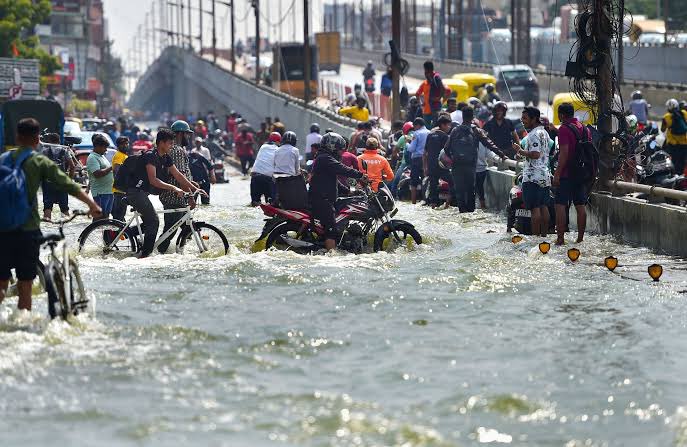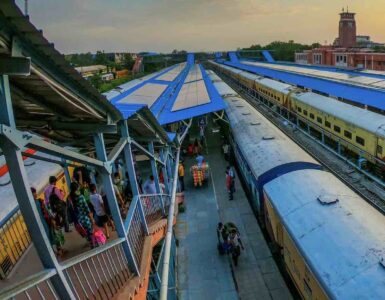India Meteorological Department (IMD) marks a significant milestone as it celebrates 150 years of service to the country.
Established in 1875, the India Meteorological Department has been at the forefront of providing critical weather and climate services, playing a vital role in disaster management, agriculture, aviation, and public safety.
As the National Meteorological Service of India, IMD has been at the forefront of meteorology, seismology, and allied disciplines, playing an integral role in safeguarding lives, supporting economic development, and advancing scientific research for societal benefit. IMD works under the Ministry of Earth Sciences.
On this historic occasion, ‘Mission Mausam,’ was launched by the Indian Prime Minister, Narendra Modi.
The Prime Minister announced the launch of ‘Mission Mausam,’ symbolizing India’s commitment to a sustainable future and future-readiness, ensuring the country is prepared for all weather conditions and becoming a climate-smart nation.
Mission Mausam is an initiative aimed at transforming India into a ‘Weather-ready and Climate-smart’ nation through advanced weather surveillance technologies, high-resolution atmospheric observations, next-generation radars, satellites, and high-performance computing systems.
The Mission will also focus on improving the understanding of weather and climate processes, and provide air quality data that will help strategize weather management and intervention in the long run.
Prime Minister also released the IMD Vision-2047 document for weather resilience and climate change adaptation. It includes plans for weather forecasting, weather management, and climate change mitigation.
In September 2024, the Indian government approved ‘Mission Mausam’ with an outlay of Rs 2000 crore over two years to boost India’s weather and climate-related science, research, and services.
India Meteorological Department: Origin and Significance
The India Meteorological Department (IMD) was established in 1875, following a series of catastrophic events that underscored the need for centralized meteorological services.
Among these, a devastating tropical cyclone struck Calcutta in 1864, followed by monsoon failures in 1866 and 1871, highlighting the vulnerabilities of the Indian subcontinent to weather extremes.
IMD’s establishment marked a pivotal moment in the development of meteorology in India, bringing all meteorological work under a unified authority. Since its inception, the department has played a crucial role in advancing meteorology as a modern physical science. It has continually upgraded its capabilities, employing cutting-edge technology and research to enhance weather forecasting, climate monitoring, and disaster preparedness.
IMD’s services have been instrumental in mitigating the impact of natural disasters, supporting agriculture, water management, aviation, and other sectors, and contributing to the socio-economic development of India and the broader region. Today, it stands as a cornerstone institution in weather and climate services, driving resilience and sustainability in the face of climate challenges.
From being the first organization in India to have a message-switching computer for supporting its global data exchange, IMD has made significant advancements since its inception, reflecting its commitment to innovation and service enhancement.
IMD has been the front runner of the development of Indigenous technology, commencing with indigenous RADAR in 1958, and Indian Satellite products in collaboration with ISRO since 1983. Automatic Weather Station since 2000, Doppler Weather Radar since 2010, Common Alerting Protocol since 2019, Impact-based Forecast since 2019, and Dynamic composite risk atlas since 2022.
The successful prediction of cyclones like Phailin (2013), Hudhud (2014), Fani (2019), Amphan (2020), Tauktae (2021), Biparjoy (2023), and Dana (2024) has demonstrated our capabilities and the value of our services in saving lives and reducing economic losses.
Since 2021, IMD has started an online interface to collect information on the weather that has occurred as well as the associated impact information for six weather events initially, viz., Rain. Hail, Duststorm, Wind Speed, Thunderstorm/Lightning & Fog.
In 2023, IMD replaced all Mercury Barometers with Digital Barometers by the UNEP Minamata convention (as mercury is hazardous to human health) at all Class I observatories.
Prime Minister’s Message for IMD

Speaking on the 150th anniversary of the India Meteorological Department (IMD), Prime Minister Narendra Modi lauded its role in serving millions of Indians over the years. IMD has become a symbol of India’s scientific progress.
He remarked that research and innovation in scientific institutions are integral to New India’s temperament. Over the past decade, he added that IMD’s infrastructure and technology have seen unprecedented expansion, with significant increases in the number of Doppler Weather Radars, Automatic Weather Stations, Runway Weather Monitoring Systems, and District-wise Rainfall Monitoring Stations, all of which have been upgraded.
The Prime Minister highlighted that meteorology in India benefits greatly from space and digital technology. He noted that India has two meteorological observatories in Antarctica, named Maitri and Bharati, and last year, supercomputers Ark and Arunika were introduced, enhancing IMD’s reliability.
The Prime Minister emphasized that the relevance of science lies not only in reaching new heights but also in improving the ease of living for the common person. He remarked that the IMD has advanced on this criterion by ensuring accurate weather information reaches everyone.
The Prime Minister highlighted that the ‘Early Warning for All’ initiative now covers over 90% of the population. He noted that anyone can access weather information for the past and upcoming 10 days at any time, with forecasts even available on WhatsApp. He added that the ‘Meghdoot mobile app’ provides weather information in all local languages.
Mr Modi pointed out that 10 years ago, only 10% of farmers and livestock owners used weather-related advice, but today, this number has increased to over 50%. He mentioned that lightning warnings were now possible on mobile phones.
The Prime Minister highlighted that previously, families of lakhs of marine fishermen were worried when they went to sea, but now, with IMD’s cooperation, fishermen receive timely warnings. These real-time updates enhance safety and strengthen sectors like agriculture and the blue economy, he added.
“Meteorology is crucial for a country’s disaster management capabilities”, remarked Shri Modi and added that to minimize the impact of natural disasters, the efficiency of meteorology must be maximized.
He highlighted that India has consistently understood this importance and is now able to mitigate the effects of disasters that were once considered inevitable.
Recalling the devastation caused by the cyclonic storm in Kandla, Kutch in 1998, and the super cyclone in Odisha in 1999, which resulted in thousands of deaths, the Prime Minister said that however, in recent years, despite numerous major cyclones and disasters, India has successfully minimized or eliminated loss of life in most cases.
He credited the significant role of the meteorological department in these successes. He noted that the integration of science and preparedness has also reduced economic losses worth billions of rupees, creating resilience in the economy and boosting investor confidence.
The Prime Minister noted that India’s Flash Flood Guidance system provides information to Nepal, Bhutan, Bangladesh, and Sri Lanka.
Discussing India’s rich history of meteorological expertise, emphasizing that traditional knowledge was documented, refined, and deeply studied in ancient texts like the Vedas, Samhitas, and Surya Siddhanta, Mr Modi said that Tamil Nadu’s Sangam literature and the folk literature of Ghagh Bhaddari in the north contain extensive information on meteorology.
He remarked that meteorology was not considered a separate branch but was integrated with astronomical calculations, climate studies, animal behaviour, and social experiences.
The Prime Minister mentioned significant works such as Krishi Parashar and Brihat Samhita, which studied cloud formation and types, and the mathematical work on planetary positions.
He further stressed the importance of linking proven traditional knowledge with modern science and urged for more research in this direction.
He also acknowledged the rich knowledge heritage within India’s tribal communities, which includes a deep understanding of nature and animal behaviour. He called for greater exploration and integration of this knowledge with contemporary scientific practices.
He encouraged scientists, research scholars, and institutions like IMD to work towards breakthroughs.
Concluding his address, Narendra Modi expressed confidence that India will play a crucial role in global service and security. He extended his congratulations to IMD and all those involved in meteorology on their 150-year journey.






Add comment